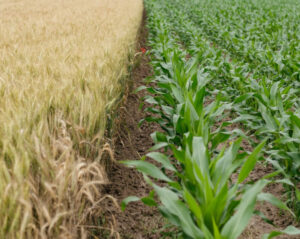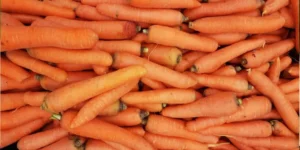Resilience and the Lost Art of Agricultural Inventiveness

After twenty years in academia, Michael Foley began farming first in southern Maryland, and then in Willits, California, where he, his wife, and oldest daughter currently operate the small, diversified Green Uprising Farm. Foley is cofounder of the School of Adaptive Agriculture, a farmer training and education program where he is a board member and teacher. He currently manages his local farmers market, and has served as vice president of the Mendocino County Farmers’ Market Association.
The following is an excerpt from Farming for the Long Haul by Michael Foley. It has been adapted for the web.
Food systems are not just about the production, distribution, and processing of foods. They represent distributions of land and power, wealth and poverty, plenty and famine. As farmers we can buy into the food system we are born to and try to rise to the top in a usually losing game, or we can try to change the system and the practice of farming itself.
The contemporary sustainable agriculture movement is an attempt to change one very complex and powerful food system.
But we will fight against odds of our own making, and not just those devised by that system, if we accept its premises, if we suppose there are no alternatives to struggling to make it in the market economy.
And there is a third option: We can return to the norm of the successful agricultural societies of past centuries that were based on a strategy of subsistence first, resilience in the face of both natural and human-made challenges, and continuing invention, and grounded in the reciprocity and fellow feeling of living communities. Understanding the alternatives that human societies have devised in the past is essential to enlarging our vision of farming for the long haul.
We don’t know what future farming will look like, but if we have a passion for farming, for caring for a piece of land and even reclaiming it from the destruction past human uses have wrought upon it, then we start by doing what we love—what we love and what we know is right. As Wendell Berry often insists, we can’t save the future; we can only do what is right for the present. And as Berry also insists, what is right must be right for the land and the people of the land.
If we have a passion for farming—for producing food not just for ourselves and our families but for others on a sufficient scale to feed them for a time—then we have to farm for production’s sake. Almost inevitably, in today’s circumstances, that means farming for a market of some sort. We may want to build all sorts of reciprocity into that—barter, exchange, giving.
But above all, for the long haul and for right now, we need to build resilience, and that means we have to build a farm that makes economic sense in the here and now.
Doing so, however, does not necessarily throw us back into the sterile logic of the marketplace, the one all those farm advisers venerate. “Economic sense” will depend upon the circumstances that each of us brings to farming: other sources of income, other vocations, our hold on the land we work, and so on. And “economic sense” should include our own livelihoods, not just the profits, and perhaps wages, we wrest from the market.
Here is how Berry accounts the success of his “marginal” farm: “As income I am counting the value of shelter, subsistence, heating fuel, and money earned by the sale of livestock.” Thus, “once we have completed its restoration, our farm will provide us a home, produce our subsistence, keep us warm in winter, and earn a modest cash income. The significance of this becomes apparent when one considers that most of this land is ‘unfarmable’ by the standards of conventional agriculture, and that most of it was producing nothing at the time we bought it.”
Such a farm may or may not produce all the income one currently needs, but it is a farm that produces resilience. It is a farm that will be better equipped to survive the uncertainties of the market economy, may creatively address the implications of climate change, and could provide one small contribution to the resilience of the larger community.
Recommended Reads
Wild Apples, Real Cider, and the Complicated Art of Making a Living
Lessons From An Unusual Christmas Tree Farm: Resourcefulness and Craft
Recent Articles
Want to grow year-round, but a greenhouse feels like a big investment? When it comes to cost and flexibility, low tunnels are the all-around winners.
Read MoreWintergreen is the stunning evergreen groundcover that’s a game-changer for your garden! It’s cherished for its aromatic leaves, vibrant fall color & bright berries.
Read MoreGrow winter carrots for a sweeter & more flavorful harvest! Ditch the bland, store-bought carrots this winter! Grow your own winter carrots for a sweeter and more flavorful twist 🥕🥕
Read MoreSearching for the perfect book to give the homesteader in your life? We’ve got your go-to books for anyone interested in organic growing, permaculture, soil health, year-round growing & more! What’s their next great read?
Read MoreWinter is coming… but that doesn’t mean you should put away those tools just yet. Extend the growing season well past the first frost!
Read More









